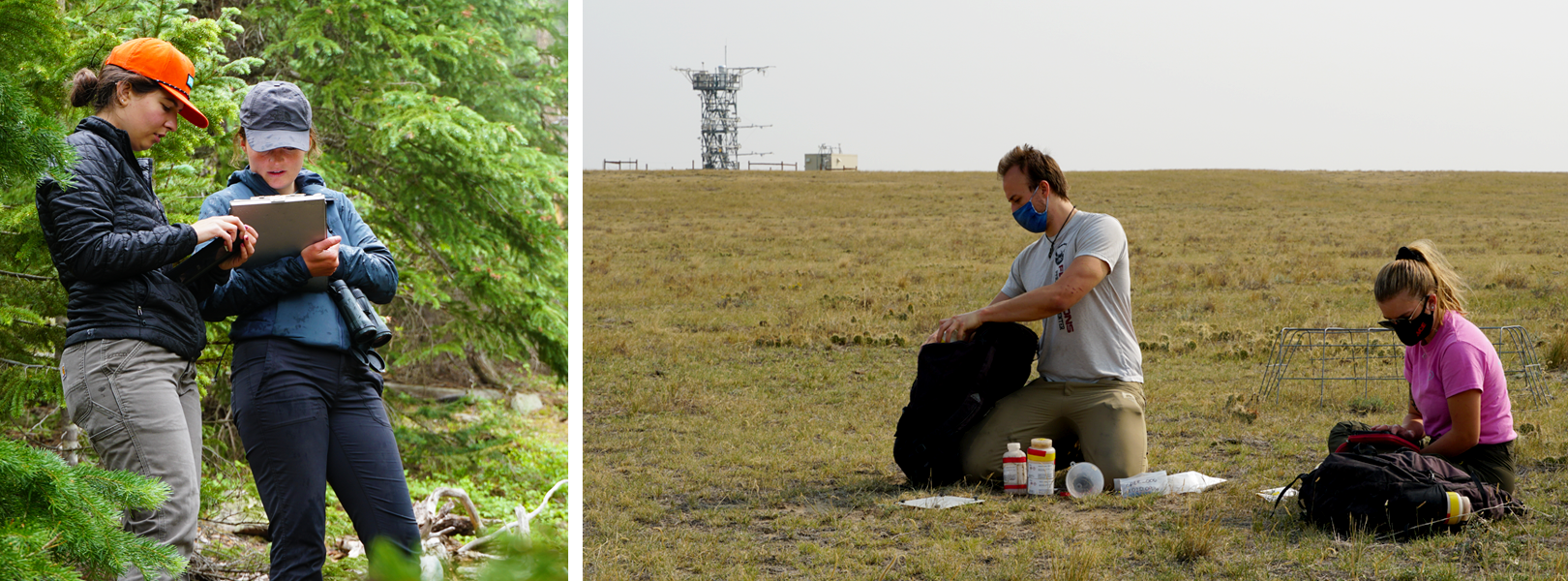NEON Ambassador Program

The NEON Ambassador Program empowers and connects a cohort of researchers and educators eager to augment NEON’s engagement with a breadth of communities. The program is designed to help Ambassadors use NEON data and resources to accelerate scientific discovery, enhance educational opportunities, increase participation of the scientific community, and/or inform public policy at a continental scale.

Who are the NEON Ambassadors?
Meet the New Cohort (2024 - 2025)!
NEON Ambassadors are:
- Linked by a passion to understand the environment and to address challenges that affect our society with actionable responses.
- Excited about NEON data and resources and their potential to advance discovery and education.
- Eager to grow the science NEON user community.
- Open-minded and creative, with a drive to collaborate with and foster the NEON community to help realize its full potential for generations of scientists to come.
What does being an “Ambassador” involve?
NEON Ambassadors will receive training in group facilitation and creative problem-solving as well as in best practices for NEON data use. The 2024 NEON Ambassador program runs from October 2024 to September 2026. Ambassadors will support the 2025 NEON Convergence Summit, and will lead an event of their own at the end of the program. In the first year, Ambassadors will participate in asynchronous training sessions and planning for the NEON Convergence Summit, in addition to a virtual Ambassador meet-up on the third Wednesday of every month. We anticipate that participants would spend approximately 2-4 hours a month on program activities. Topics to be covered include:
- Fundamentals of Creative Problem Solving. What is the creative problem-solving process and how do you apply it to your work life?
- Facilitation 101: Break Glass and Facilitate. Facilitation basics include how to build an interactive agenda, icebreakers, facilitation tips and tricks, and more. This course will set the ambassadors up to create the agendas for their capstone event.
- NEON data: tools, best practices, and science support
- Preparation for the NEON Convergence Summit, to be held in October 2025
In year two (2025-26), Ambassadors will each develop and lead a capstone event, with advice and support from a NEON mentor in their field of study. Events can be workshops, hackathons, short courses, or other activities agreed on with NEON staff. Events can be hosted at the Ambassador’s home institution, at another organization, at a conference, or other venue agreed on with NEON staff.
Why be a Champion for NEON?
The National Ecological Observatory Network…
- Is strategically poised to address the issues of our time; you will be a champion for planetary and societal health and well-being now and for future generations.
- Is a platform upon which educational resources can be developed and shared to foster data science in the classroom. Touches national resources vital to food, water and energy production systems that are impacted by human activity and ecosystem change.
- It is of interest to all sectors, private, public, and governmental, that increasingly need empirical and actionable data to manage and react to extremes in the moment of change.
- Provides accessible data and strives to reduce barriers and hurdles to data access.
Benefits for Ambassadors
NEON Ambassadors can benefit from...
- A trusted network of like-minded peers: meet, interact with, and learn from people across a multitude of disciplines and expertise, promoting science, education, outreach, and policy implementation.
- Direct access to NEON: forge direct working relationships and points of contact with NEON staff and resources.
- Dedicated community platform: A slack channel dedicated to the program offering direct access to fellow Ambassadors and NEON staff and support.
- Dedicated community GDrive and toolkit: a one-stop-shop to navigate all Ambassador resources and toolkits that will evolve with the needs of the cohort.
- Exposure to “Big Science:” Experience big science operations and resulting data streams in a way that is not typically accessible. This illuminates the challenges and opportunities of the evolving NEON program at a continental scale. Ambassadors are part of this effort.
- Access resources for catalyzing wider community engagement: Take part in and lead organizing activities that expose NEON to wider communities and partners; catalyze new ideas to empower more people to use NEON data (e.g., development of new tools) using NEON resources.
- Amplifying professional profiles: build recognition within the Ambassador community and beyond through NEON seminars, partnerships, web pages, and social media.
Who should apply?
The Ambassador program is geared toward postdoctoral researchers, senior graduate students, and other early career researchers. Scientists at other career stages and on alternate career paths are encouraged to apply if interested, and to describe in the application how this program aligns with their skills and goals. Applicants must be at a U.S.-based institution. Experience with NEON resources is preferred but not required.
Application Process and Deadline
The application period for the 2024-2026 cohort has closed.
Questions? Please contact ambassador@battelleecology.org